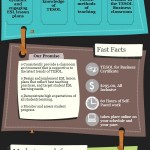The Sapir-Whorf Hypothesis, commonly known as linguistic relativity, is one of the most fascinating ideas in the study of language and thought. It proposes that the structure and vocabulary of a language influence the way its speakers perceive and interact with the world. In essence, language doesn’t just describe reality—it shapes it.
Could we frame linguistic relativity in a way as profound and elegant as Einstein’s relativity? Absolutely. Just as Einstein’s E=mc² unified energy and mass under the speed of light, we can explore how language (L), cognition (C), and perception (P) are interconnected in a dynamic system. But first, let’s unpack the concept.
The Foundations of Linguistic Relativity
The roots of linguistic relativity can be traced back to the early 20th century, with linguists Edward Sapir and Benjamin Lee Whorf. They observed that speakers of different languages conceptualize the world in distinct ways. Some key examples include:
- Color Perception: In some Indigenous Australian languages, there are no words for specific colors like “blue” or “green.” Instead, speakers describe colors based on their function or relation to nature, such as “the color of fresh leaves” or “the color of the sky at dusk.” This changes how speakers categorize and perceive colors compared to languages like English that use fixed, universal color terms.
- Time and Space: Hopi, a Native American language, does not treat time as a linear progression of past, present, and future. Instead, it emphasizes the cyclical nature of events, influencing how its speakers think about time.
- Spatial Orientation: In Guugu Yimithirr, an Aboriginal Australian language, directions are based on cardinal points (north, south, east, west), not relative positions (left, right). This linguistic structure trains speakers to maintain an acute awareness of their spatial orientation at all times.
A Mathematical Formula for Linguistic Relativity
To distill linguistic relativity into a formula, we need to account for the three core variables:
- L (Language): The structure and vocabulary of a language.
- C (Cognition): The mental processes involved in understanding, reasoning, and interpreting.
- P (Perception): How individuals perceive the world around them through their senses.
Here’s the proposed formula:
R = L × (C + P)
Where:
- R represents “Relativistic Thought,” the degree to which language shapes reality for its speakers.
- L amplifies the interaction between cognition and perception. A more linguistically distinct structure increases the magnitude of relativistic effects.
- C + P captures the interplay between how we think and how we perceive.
In this framework, a language with unique structures (like Guugu Yimithirr) significantly influences its speakers’ thought patterns (C) and perceptions (P), resulting in a higher value for R compared to languages with more universal structures.
Implications of Linguistic Relativity
The idea that language shapes thought has profound implications for everything from cross-cultural communication to artificial intelligence. Here are a few key takeaways:
- Cross-Cultural Understanding: Recognizing how language shapes worldview fosters empathy and mutual respect. For instance, understanding that a Hopi speaker sees time as cyclical can deepen cultural appreciation.
- Cognitive Diversity: Bilingual and multilingual speakers often experience cognitive flexibility, as they toggle between linguistic frameworks that shape different modes of thought.
- Artificial Intelligence: AI language models must consider linguistic relativity to better process and generate language in culturally nuanced ways. A “universal” AI risks misunderstanding cultural contexts if it doesn’t account for linguistic differences.
Testing the Formula in the Real World
Consider an experiment where speakers of two languages with distinct spatial systems, such as English and Guugu Yimithirr, are asked to complete tasks involving navigation. The results often reveal that Guugu Yimithirr speakers excel in cardinal-point tasks, while English speakers rely on relative positioning. This validates the formula by showing how L (the language) amplifies C and P in culturally specific ways.
A Relativistic Perspective on Reality
Linguistic relativity isn’t about limiting thought—it’s about expanding it. By understanding the interplay of language, cognition, and perception, we gain insight into the diverse ways humans experience the world. Like Einstein’s theory of relativity revolutionized physics, the Sapir-Whorf Hypothesis challenges us to rethink the relationship between words and reality.
So, the next time you say “blue,” remember that your language is shaping not only your thought but also your perception. And in the grand symphony of human experience, linguistic relativity is the hidden harmony that makes every worldview unique.
R = L × (C + P): The relativity of language, thought, and perception.



